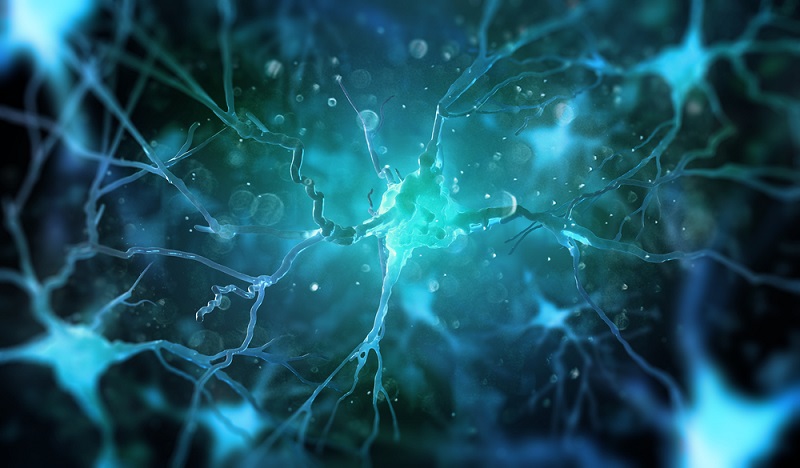A Newly Recognized Brain Disorder Can Mimic Alzheimer's. Here's How It's Different.

Researchers are officially defining a new brain disorder that mimics Alzheimer's disease, giving the condition a name and diagnostic criteria, according to a new report.
The disorder will be known as LATE, which stands for limbic-predominant age-related TDP-43 encephalopathy, the report said. LATE has only recently been recognized as a type of dementia, and this is the first time that researchers have come to a consensus about what the disease should be called and how it is distinguished from other brain disorders.
The new report — published today, April 30, in the journal Brain — is the product of a National Institute on Aging (NIA)-sponsored workshop on the condition, which included researchers from more than 20 institutions in six countries. [6 Big Mysteries of Alzheimer's Disease]
Because LATE and Alzheimer's disease have similar symptoms, cases of LATE may have previously been mistaken for cases of Alzheimer's. Recognizing these as two separate disorders will advance research on both conditions, the study authors said.
"The ultimate goal ... is to either prevent or at least be able to treat the causes and the symptoms" of either brain disease, be it Alzheimer's or LATE, said Nina Silverberg, director of the Alzheimer's Disease Centers Program at the NIA and co-chair of the LATE workshop.
"In order to do that, we have to understand what's causing the symptoms," Silverberg told Live Science. "Sorting through who has what [condition] hopefully should help us" with this goal.
There is now an "urgent need" for research on LATE, the report said, as there is much more to learn about the condition, including ways to improve diagnosis and identify risk factors, as well as prevent and treat the disease. Ultimately, the new report is a "starting point for the research to move forward" on this condition, Silverberg said.
Sign up for the Live Science daily newsletter now
Get the world’s most fascinating discoveries delivered straight to your inbox.
LATE vs. Alzheimer's
Dementia isn't a specific disease; rather, the term refers generally to a loss of cognitive functioning, such as declines in memory and thinking ability, that interferes with a person's daily activities. Alzheimer's is the most common type of dementia, but researchers now know that there are many different varieties of the disorder.
Although the symptoms of Alzheimer's and other dementias may be similar, these diseases look different inside the brain. The hallmark of Alzheimer's is the accumulation of plaques, made from proteins called beta-amyloid, and tangles, consisting of a different protein called tau, in the brain.
But recently, researchers have found that not everyone suspected to have Alzheimer's shows these telltale signs in their brains, meaning they actually have a different condition.
In cases of LATE, people have an accumulation of a different protein, called TDP-43, that is misfolded in the brain, according to the report.
What researchers know about LATE
LATE tends to affect the "oldest old" in the population: More than 20% of people over age 85 show signs of the condition, the report said. But more research is needed to better understand how many people have the condition, Silverberg said.
Still, the public health impact of LATE is likely at least as large as that of Alzheimer's, the authors wrote.
LATE affects multiple areas of cognition, including memory, and ultimately impairs everyday activity. It appears that LATE progresses more gradually than Alzheimer's disease, although the two conditions may coincide and cause a more rapid decline than either would alone.
The new report describes three "stages" of LATE, depending on where in the brain TDP-43 is found. (The three areas are the amygdala, hippocampus and middle frontal gyrus.)
Currently, LATE can be diagnosed only after death, during autopsy. But the authors said that they hope the new report spurs research into biomarkers for the disease, so that doctors can diagnose it before death and study it in clinical trials. Finding biomarkers for the disease is also important for the study of Alzheimer's, so researchers can distinguish between the two conditions when a person is alive, the authors said.
- 8 Tips for Healthy Aging
- 10 Things You Didn't Know About the Brain
- Extending Life: 7 Ways to Live Past 100
Originally published on Live Science.

Rachael is a Live Science contributor, and was a former channel editor and senior writer for Live Science between 2010 and 2022. She has a master's degree in journalism from New York University's Science, Health and Environmental Reporting Program. She also holds a B.S. in molecular biology and an M.S. in biology from the University of California, San Diego. Her work has appeared in Scienceline, The Washington Post and Scientific American.










